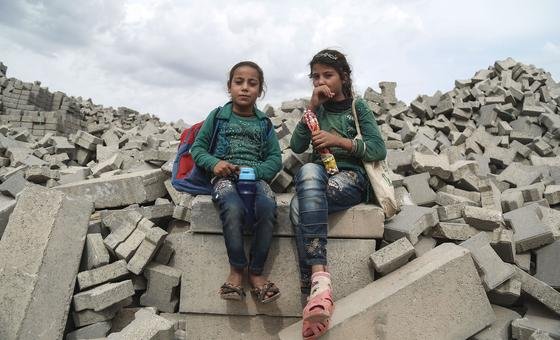This is the first report of its kind to examine the link between child trafficking and violations of the rights of children caught in war.
These include recruiting children as soldiers, killing or maiming them, raping and other forms of sexual violence, kidnapping, attacking schools and hospitals, and preventing humanitarian aid from reaching them.
The report was prepared by the UN Secretary-General’s Special Representative for Children and Armed Conflict, Virginia Gamba, in collaboration with the UN Special Rapporteur on Trafficking in Persons, Chiobhan Mullally.
The study primarily focuses on seven countries or geographic regions: Colombia, the Lake Chad Basin of Africa, Libya, Myanmar, South Sudan, Syria, Ukraine.
Control and intimidation
Child trafficking takes many forms during armed conflict, including sexual exploitation and sexual slavery, child marriage, recruitment for war, and the use of children for other forms of support.
These tactics have long been used by warring parties to terrorize affected communities, gain control over them, and perpetuate violent conflict.
These serious violations of child rights also increase the risk of trafficking. For example, during times of war, if humanitarian aid is prevented from reaching poor populations, the risk of child trafficking increases.
sexual dimension
According to the report, the risk of child trafficking also has a strong gender dimension. While girls are often the targets of sexual exploitation and trafficking for child marriage, boys are more likely to be recruited into conflict as child soldiers.
They may be trafficked within national borders and even across borders during armed conflict. In Syria, for example, many forms of child trafficking have emerged in many places since the violent conflict began a decade ago.
These include the abduction of Yazidi girls in Iraq, their transportation for sexual slavery, and forced marriage. where many Syrian families were forced to marry off their daughters to members of the Islamic State (ISIL).
Due to the lack of accountability in child trafficking, a sense of impunity prevails and these cases of child rights violations continue unabated.
Recommendations for countries
The UN study also made several specific recommendations for member countries.
One recommendation emphasizes that trafficked children should be treated as victims rather than as participants in the crime. And so, it is important to identify the victim early.
Other recommendations include curbing child trafficking, ensuring long-term protection for victims, universal registration of all children and eliminating statelessness.

